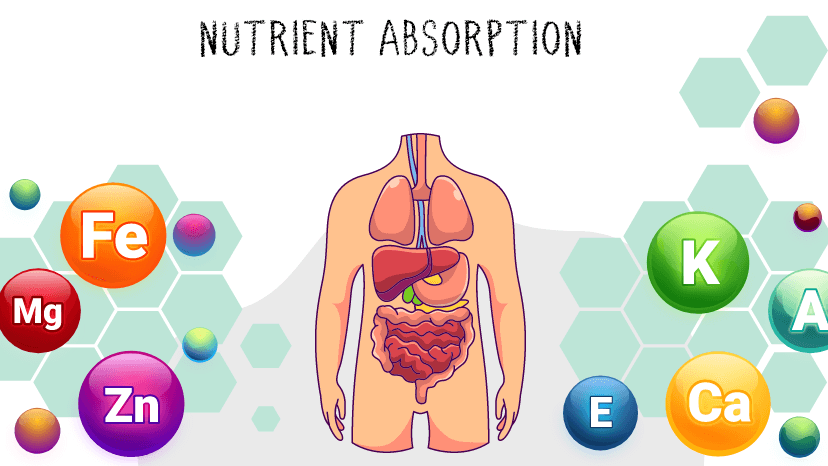
Meals may be rich in vitamins and minerals, yet their benefits don’t always shine through. Two people can eat the same salad, but one feels energized while the other stays sluggish. The difference often lies in the patterns surrounding food, the glass of water before a meal, the walk afterward, or the way the evening is spent before bed.
Nutrients don’t work alone. They depend on hydration, rest, movement, and timing. When those elements line up, the body extracts more value from every bite.
Hydration, Sleep, and Movement: The Everyday Support System.
Hydration: More Than a Drink.
Water is the quiet partner in nutrient use. It moves vitamins and minerals through the bloodstream, carries fiber through the digestive tract, and allows electrolytes to balance properly.
Drinking a tall glass of water in the mid-afternoon supports the circulation of vitamin C, B vitamins, and antioxidants throughout the body. A slice of Citrus limon (lemon) or a few crushed leaves of Mentha spicata (spearmint) adds flavor and gently aids digestion.

Sleep: Where the Repair Takes Place.
Sleep acts like the body’s overnight repair crew. During those hours, tissues rebuild, hormones balance, and enzymes activate to process nutrients from earlier meals.
Magnesium from Spinacia oleracea (spinach) or Cucurbita pepo (pumpkin seeds) eases the nervous system, encouraging deeper rest.
In that state, antioxidants such as vitamin E and selenium perform better, strengthening immune defenses. A steady bedtime, not too late, not too variable, signals the body that it’s time to make use of the day’s nutrients.

Movement: Putting Nutrients in Motion.
Light activity is enough to help nutrients circulate. A ten-minute walk after dinner encourages the body to use glucose efficiently, while climbing stairs or stretching arms overhead supports bone strength by improving calcium and vitamin D uptake.
Think of movement as the messenger. Without it, nutrients remain available but not fully delivered. With it, they reach muscles, bones, and organs in record time.

The Role of Timing: Meals That Match the Clock.
Eating meals in line with your daily routine helps your body use nutrients efficiently and keeps energy levels even.
Morning: Fuel for Focus.
Warm oats (Avena sativa) topped with Prunus dulcis (almonds) and berries bring together complex carbs, protein, and antioxidants at a time when metabolism runs high. The effect carries well into mid-morning, keeping energy even instead of spiking and crashing.
Midday: Pairing for Power.
Lunch provides a chance to combine foods strategically. Iron from Lens culinaris (lentils) paired with vitamin C from Capsicum annuum (bell peppers) improves iron uptake. That pairing supports oxygen flow, making the afternoon feel sharper and more productive.
Evening: Gentle on Digestion.
Late, heavy dinners often weigh down sleep. Lighter meals with magnesium and healthy fats make a noticeable difference. A bowl of leafy greens, a handful of Cucurbita pepo (pumpkin seeds), and slices of Persea americana (avocado) create calmness before bed while still nourishing the body.
Snacks: Small Helpers.
Between meals, simple snacks fill the gap without overloading digestion. A banana (Musa acuminata) with Juglans regia (walnuts) brings potassium, omega-3s, and natural sugars that fuel the brain and muscles without causing a crash.
Everyday Practices That Make Food Work Harder.
Certain small choices can multiply the impact of a meal:
1. Chew well – saliva starts breaking food down, making nutrients easier to absorb.
Pair foods thoughtfully – fat-soluble vitamins A, D, E, and K need fats to be absorbed. Carrots sautéed with olive oil or kale tossed with avocado bring this balance.
2. Moderate stimulants.
Consuming too much caffeine or alcohol can interfere with the body’s ability to process key nutrients such as magnesium, iron, and B vitamins. Limiting these substances helps ensure better absorption and supports overall energy, metabolism, and nutrient balance.
3. Season with purpose.
Turmeric (Curcuma longa), especially when paired with black pepper (Piper nigrum), makes antioxidants more bioavailable. Ginger (Zingiber officinale) adds warmth and supports digestion.
4. Keep a rhythm – consistent times for meals, movement, and sleep help nutrients work smoothly.
A Practical Daily Guide.
– Sip water throughout the day.
– Keep a regular sleep schedule.
– Add light movement after meals.
– Have your biggest meals in the morning and around lunchtime.
– Combine foods that enhance each other.
– Limit excess coffee or alcohol.
– Include herbs, seeds, and greens often.
Summary.
Nutrients hold potential, but daily habits decide how much of that potential becomes energy, clarity, and resilience. Water carries them. Sleep activates them. Movement distributes them. Timing sets the stage for their best use.
Even small, steady actions have impact. A glass of water on the desk, a walk around the block after lunch, or a lighter dinner in the evening all help nutrients do their work.
Food is only half the story.
Daily habits complete it.
Give nutrients the right conditions, and the body responds with strength and balance.

